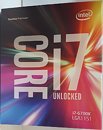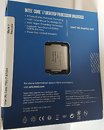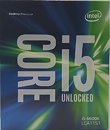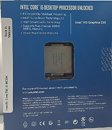Monday, August 3rd 2015

Intel Core "Skylake" Retail Boxes Surprisingly Colorful
The retail packaging of Intel's 6th generation Core "Skylake" processors in the LGA1151 package, will be surprisingly colorful, and a throwback to the pre-Pentium 4 era, according to spy-shots of the retail boxes of the upcoming Core i7-6700K and Core i5-6600K. What's even more surprising, is that packages of the i7-6700K and i5-6600K, which feature unlocked base-clock multipliers, making them primed for overclocking, do not include stock cooling solutions. Their retail packages resemble those of Intel's Core i7 HEDT processors. In the box, you'll find just the processor, its case-badge, and basic documentation.
Both the Core i7-6700K and Core i5-6600K feature the same integrated graphics SKU - HD Graphics 530. Both feature integrated memory controllers that support both DDR3L and DDR4 memory types. The Core i5 predictably lacks HyperThreading, and only features 6 MB of L3 cache, while the Core i7 features HyperThreading, and the full 8 MB present on the chip. The "Skylake" silicon will be built on the 14 nm process.
Both the Core i7-6700K and Core i5-6600K feature the same integrated graphics SKU - HD Graphics 530. Both feature integrated memory controllers that support both DDR3L and DDR4 memory types. The Core i5 predictably lacks HyperThreading, and only features 6 MB of L3 cache, while the Core i7 features HyperThreading, and the full 8 MB present on the chip. The "Skylake" silicon will be built on the 14 nm process.




37 Comments on Intel Core "Skylake" Retail Boxes Surprisingly Colorful
About the AMD picture, so true, they were late.
- You're running under the assumption that more cores = better performance. This is simply not true. As a software developer who writes multi-threaded applications, I can tell you that there is a limit to what more cores can do and it varies from task to task. Not every task can be made to run in parallel and get a benefit from it. I can use 20 threads but that will do me no good if every thread is blocking so often I'm not using more than 1 core worth of resources at once while adding to the overhead of being multi-threaded in the first place.
- Intel isn't putting more cores on their mainstream platform because there is no need for it (see #1). They would rather dedicate more die space for the iGPU so they can take over yet another market from AMD. When push comes to shove, most consumers won't care about a dedicated GPU because Intel will actually have something half decent at the rate they're progressing, even when using bastardized X86 cores for GPU compute which is fricken hysterical IMHO.
- AMD tried adding more cores and it got them nowhere fast (see #1) but, their APUs did in the sense of what the average consumer wants (see #2).
Please explain to me where I'm wrong here.In all seriousness, Intel is bolstering their iGPU performance for very good reason. Intel already makes fast CPUs and has nothing more to prove on that front. If Intel's iGPUs start competing with mid-range cards it's not only going to take a bite out of AMD but NVidia as well. Hate to say it, but this is where sales are at. People like me who buy a 390 is not your average consumer. We need to remember that. TPU tends to have power users not standard run-of-the-mill consumers. It's all about market share.
But in all honesty Iris was the great equalizer, while Iris Pro is just the icing on the cake. Using 128MB of "GPU" cache as CPU L4 cache... I want to see those benchmarks.
And with the indie revolution happening (some say it's just about to end, I disagree), helped in great part by the disruptive mobile market, the iGPU is here to stay. All it needs to do is give us yesterday's performance, but in 4K.